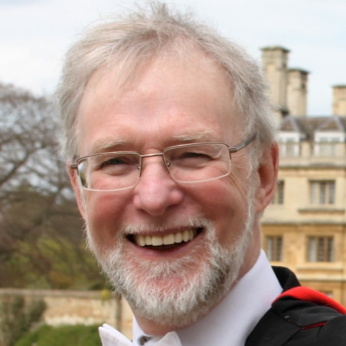Inkjet Drop Behaviour
Fluid behaviour in printhead, in-flight and on surfaces during inkjet printing
Wednesday 5 - Thursday 6 July, 2023
The Møller Institute, Cambridge, UK
COURSE FOCUS
In this course, you can learn about drop behaviour and drop-substrate interactions during printing. The course covers the link between fluid bulk & dynamic properties on jetting, waveform & fluid interaction during drop ejection, drop break-up & aerodynamics, before looking at drop-substrate interactions including during drying and curing.
The course will be led by Dr Tri Tuladhar and Dr Bart Hallmark of TriJet, Dr Stephen Hoath and Dr Cristina Rodriguez-Rivero of University of Cambridge and Dr Mark Crankshaw of Advanced Inkjet Solutions.
COURSE OUTLINE
wednesday 5 July 2023
08:00 - 09:00 Registration
09:00 Course begins
Session 1: Introduction to various aspects of jetted inkjet drop behaviour.
Dr Tri Tuladhar, TriJet
Inkjet: Defects and associated fluid properties
Inkjet scale and dimensionless groups: jets and drops.
Printhead Energy flow chart during jetting: Electro-mechanical-acoustic-thermal
Ink flow regime throughout ink supply system (from bottle to substrate)
Factors influencing jetting behaviour and print quality.
Session 2: Printhead physics
Dr Bart Hallmark, TriJet & Chrysenteron Engineering
Basic of inkjet principles
Waveform and fluid motion in printhead in channel nozzle
Interactive session – Modelling of single/multiple printhead channels and exploring the effect of ink bulk and dynamic properties, printhead geometry and waveform design on drop ejection from the nozzle.
12:30 - 13:30 Lunch
13:30 Session begins
Session 3: In-flight
Dr Steve Hoath, University of Cambridge
Drop watchers and their use in inkjet printing studies.
Published International standard measurement methods for jetted drop:
IEC 62899-30n for Jetted drop speed (1), volume (2), direction (3) and placement (4)
Session 4: Aerodynamic effect on print quality
Dr Maria Cristina Rodriguez-Rivero, University of Cambridge
Local airflow and electrostatic effects on droplets
Throw distance, substrate motion, drop impact.
Drop range, air flows around jets, drops and substrate.
Flows over moving substrates (DoD):
Example: aerodynamics in printing gap and wood-graining effects
17:00 Session ends
17:00 - 18:00 Reception
Join us for beers, wines and good company!
thursday 6 July 2023
09:00 Session begins
Session 5: Droplet impacts
Dr Mark Crankshaw, Advanced Inkjet Solutions
The phases of droplet impact on a surface
Practical outcomes for different inks and surfaces
Methods for optimising outcomes
Drying, curing and their effects on the end result
Session 6: Inkjet fluid map and jetting prediction
Dr Tri Tuladhar, TriJet
Linking fluid dynamic properties, jetting characteristics and reliability
12:30 Course ends
COURSE LEADERS
Dr Tri Tuladhar, Principal Consultant
TriJet, UK
Tri Tuladhar studied Chemical Engineering from RMIT, Australia and received a PhD in Chemical Engineering from the University of Cambridge, UK. He has over 20 years’ experience in R&D in academia and industry in several scientific fields. Since 2005, he has focussed on complex rheology of inkjet printing ink and developed novel techniques to link fluid rheology to jetting behaviour. He heads Trijet Limited, a consulting firm specialising in all aspects of inkjet printing, speciality paints and enamels for glass processing, and providing bespoke solutions in formulations, optimisations of inkjet inks and paints, complex rheological characterisations, jetting optimisation and developing customised rheological and visualisation tools for such applications.
Dr Bart Hallmark, Engineering Associate
TriJet & Chrysenteron Engineering, UK
Bart Hallmark is a chartered chemical engineer and chartered scientist, and gained his MEng and PhD from the University of Cambridge, UK. Bart was a senior lecturer in chemical engineering at the University of Cambridge until 2021 and had research and teaching interests in design, rheology and computational fluid dynamics. He recently formed Chrysenteron Engineering Ltd, is an associate of Trijet Ltd, and is interested in rheological analysis and print head modelling.
Dr Stephen Hoath
University of Cambridge, UK
Dr Steve Hoath was a Senior Research Associate at the University of Cambridge Department of Engineering Inkjet Research Centre from 2005 to 2017. He is now an Emeritus Fellow of Wolfson College Cambridge having served as Director of Studies for Engineering at Wolfson between 2011-2018. He holds a doctorate in physics from the University of Oxford, UK and is a Fellow of the Institute of Physics. Dr Hoath edited “Fundamentals of inkjet printing” (2016) for Wiley-VCH, while his inkjet research centred on high-resolution high-speed visualisation of jetting, interpretation and modelling of complex fluid behaviour, and international standards for inkjet printed electronics equipment.
Dr Maria Cristina Rodriguez-Rivero, Research Associate
University of Cambridge, UK
Dr Rodriguez-Rivero received her MEng in Mechanical and Electrical Industrial Engineering in 2008 and her PhD in Chemical Engineering (Fluid dynamics, on micro-particle production using continuous jet breakup techniques for biomedical applications) in 2014 in Salamanca, Spain. After receiving her PhD she joined the Inkjet Research Centre at the University of Cambridge, UK, as a Research Associate, to study the aerodynamic effects in inkjet applications in order to understand the misplacement of ejected droplets. Her current research focuses on liquid droplet and jet behaviour, airflows and visualization techniques at the small scale with direct application to inkjet and dispensing techniques for new manufacturing concepts such as printed electronics and sensors.
Dr Mark Crankshaw, Consultant
Advanced Inkjet Solutions, UK
Mark Crankshaw gained his PhD from the University of Cambridge and has more than 20 years’ experience in inkjet covering printhead science, technology and development, performance optimisation, integration and applications. As a contributor to EPSRC consortium projects covering the fundamentals of inkjet, and Principal Engineer at CDT, he studied droplet impacts and wetting extensively, as well as their effects on final printed features.






